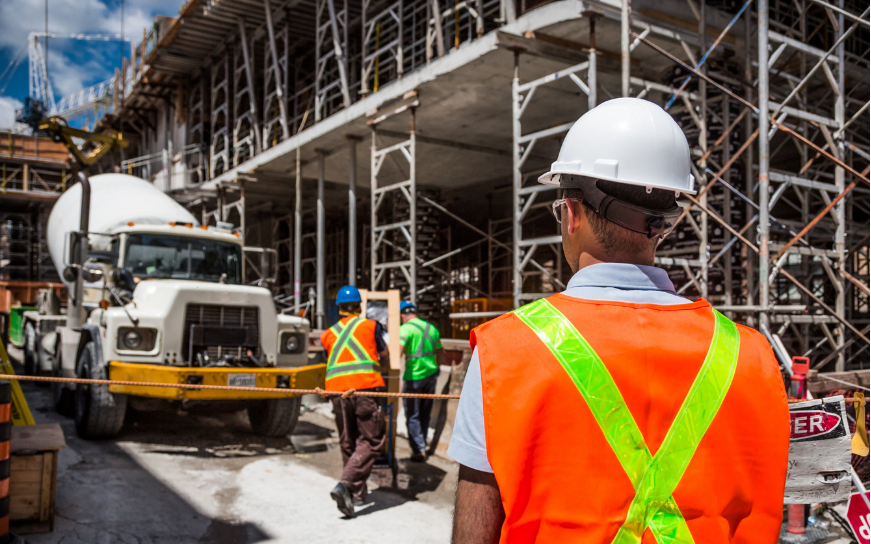Good morning, local leaders. This daily economic intelligence digest is crafted specifically for cities that reject outdated strategies, bureaucratic inertia, and yesterday’s economic development approaches. Realistic, actionable, and clearly stated, we’ll equip you to make proactive, informed decisions today.
Tariff War and Fed Feud Spook Markets
What Happened: Wall Street took a beating on Monday as President Trump’s escalating trade war and public clash with the Federal Reserve sent investors running. The S&P 500 and Dow each fell about 2.5% (the Dow dropped nearly 1,000 points), and the tech-heavy Nasdaq sank 2.6%. In a rare sight, U.S. government bonds and the dollar also tumbled instead of serving as safe havens – a sign that fear is rooted in Washington’s policies. Trump is pressing for immediate interest rate cuts (calling Fed Chair Jerome Powell “Mr. Too Late” and a “major loser”) and hinting he might fire Powell. Meanwhile, trade tensions worsened: talks with Japan yielded no quick deal, and China warned it will retaliate against any country siding with U.S. tariffs. Gold prices hit record highs as investors sought safety, and even oil prices slid about 2% on worries that a bruising trade war could choke global demand.
Why This Matters: A market plunge isn’t just a Wall Street problem – it hits Main Street and City Hall directly. Cities’ pension funds and investments just took a hit, potentially widening local pension deficits. At the same time, rising Treasury yields (now over 4.4% on the 10-year) mean higher borrowing costs for everything from municipal bonds to mortgages, which can stall infrastructure projects and private development in your community. Trade-war tremors threaten local factories, exporters, and even small businesses that rely on global supply chains, potentially putting jobs at risk. And if political meddling undermines the Fed’s inflation fight, any short-term boost could backfire into higher inflation down the road – eroding your residents’ buying power and jacking up costs for city services. Bottom line: today’s chaos in the markets is a wake-up call to brace your city budget for volatility and double-check that your economic fundamentals (like a diversified local economy and rainy-day reserves) are in order. Free-market stability and investor confidence matter on the ground: when they crack, cities feel the pain. Stay alert and be ready to reassure constituents and businesses that your local economy can ride out the turmoil with prudent fiscal management and pro-growth policies.
Slower Growth Expected, But No Recession (Yet)
What Happened: A key U.S. leading indicator is flashing yellow, not red. The Conference Board’s Leading Economic Index fell again in March, down 0.7%, marking its latest signal that economic activity is likely to slow in the coming months. Weak consumer expectations, a slide in stock prices, and softer manufacturing orders drove the decline – no surprise given the current tariff uncertainty. In response, analysts have trimmed their forecasts for U.S. growth: 2025 GDP is now expected to grow around a modest 1.6%, which is below the country’s usual trend. The good news? Economists emphasize that, despite these warning signs, there’s no clear evidence the economy has entered a recession. The coincident index (tracking current conditions like jobs and income) is still inching up, and unemployment remains low. In short, the outlook has downshifted to “caution” – slower growth, skinnier profit margins – but we’re not in freefall.
Why This Matters: For city leaders, a slower-growing economy is the reality to plan for – but it’s a manageable one if you act. 1.6% growth means leaner times for tax revenue: sales taxes won’t boom, property values may plateau, and new development could cool off. That’s a signal to tighten your fiscal belts slightly now (trim the fat and red tape) rather than face a crisis later. At the same time, “no recession yet” means you shouldn’t panic or slash and burn budgets in ways that undercut essential services or future growth. This is the moment for pragmatic, proactive adjustments: prioritize spending on programs that truly spur local business activity and jobs, and delay or reconsider projects predicated on rosy growth assumptions. If deepening trade wars are part of the slowdown, cities with manufacturing or export industries should outreach to those employers – can you help them pivot to new markets or technologies? And if consumers are skittish, maybe accelerate your plans to attract investment in diverse sectors (tech, healthcare, logistics) to keep your job base solid. In essence, treat this as a forecast for drizzly weather, not a hurricane: pack an umbrella (build reserves, encourage private investment with streamlined regulations) but don’t shut down the picnic. Cities that stay agile and cut through bureaucratic inertia now can still grab opportunities and outpace the national trend, even in a slow-growth environment.
L.A. Mayor Plans 1,650 Layoffs to Tackle Budget Crisis
What Happened: Los Angeles is taking drastic action to balance its books. On Monday, Mayor Karen Bass unveiled a $14 billion budget proposal for fiscal year 2025-26 that closes a gaping nearly $1 billion deficit – but at a painful price. The plan would eliminate over 2,700 city positions, about 1,650 of them through outright layoffs of city workers (the rest are vacant jobs getting wiped). Virtually every department will feel the squeeze. The LAPD faces more than 400 civilian layoffs, pushing the police force down to its smallest size since the 1990s as new hires can’t keep up with attrition. Sanitation, street services, and transportation departments are slated for hundreds of job cuts as well, meaning fewer workers to fix roads, haul trash, or run city programs. One notable exception: the Fire Department is set to gain funding for new hires, as the city beefs up firefighting capacity three months after a devastating wildfire. Mayor Bass calls the layoffs a “last resort” after exhausting other options – and she’s actively lobbying California’s governor and legislature for a state rescue package to prevent these cuts. The proposal now heads to the City Council, where deliberations (and desperate hopes for state aid) will determine if these layoffs become reality by July.
Why This Matters: Los Angeles’s budget crunch is a cautionary tale for cities everywhere. When rising personnel costs, pension obligations, legal payouts, and an economic slowdown collide, even America’s second-largest city has to consider doing more with less. For local leaders, the L.A. plan is a blunt reminder to get ahead of fiscal imbalances before they reach crisis levels. If your city has been kicking the can on deficits or counting on one-time federal pandemic aid, take note: those patches are peeling off. The human side of L.A.’s cuts – fewer cops on the street, scaled-back trash pickup, slower permit processing – shows how budget mismanagement and bureaucratic bloat ultimately hurt everyday services and residents. Nobody wants layoffs, but failing to align spending with revenues early can lead to even harsher outcomes. Also, depending on state or federal bailouts is a risky bet; L.A. might get help, but many cities won’t, especially if multiple municipalities are in trouble at once. The free-market, pro-growth angle here? Cities must foster a vibrant local economy that grows the tax base, rather than just growing government. Avoid heavy-handed policies (like onerous regulations or rent controls that scare off investment) that stunt revenue potential. And prioritize core services over peripheral programs when budgeting – that gives you more room to maneuver when belts tighten. L.A.’s predicament should light a fire under city councils everywhere to examine their budgets now, trim the fat, and enact reforms that make government leaner and more effective. Fiscal discipline and innovation today can mean prosperity tomorrow – without the pink slips.
Chicago Confronts Fiscal Crisis, Federal Funding Threatened
What Happened: Across the country in Chicago, the financial alarm bells are also ringing loud. Mayor Brandon Johnson on Monday described Chicago’s situation as a “financial crisis” and signed an executive order assembling a team to tackle it. The city is staring at a projected $1.2 billion budget deficit in 2026 – a gap that could swell to $1.6 billion if the economy goes south, according to the latest forecast. Years of ballooning pension costs, rising personnel expenses, and massive debt have built a structural mess that can no longer be papered over. (Sound familiar? Decades of political can-kicking are coming due.) To make matters worse, Chicago’s transit agency and public schools are approaching a funding cliff now that their federal COVID aid has dried up, which could force the city to prop them up or face transit cuts and school budget shortfalls. And just when it couldn’t get worse, it did: President Trump is threatening to yank all federal funding from Chicago because of its immigration “sanctuary” policies. Yes, you read that right – in the middle of a fiscal crisis, the White House may pull the plug on millions in aid for transit, housing, public safety, and more unless Chicago changes its stance on protecting undocumented immigrants. Mayor Johnson blasted these threats as “hostile” and even “economic terrorism,” but the uncertainty remains. With deficits looming and D.C. potentially turning off the taps, Chicago officials are bracing for tough choices. Johnson hasn’t ruled out service cuts or layoffs to balance the budget, though he hopes to boost revenue (read: likely tax hikes or finding new funding sources) before swinging the axe. One way or another, Chicago will have to do, as the mayor says, “more with less.”
Why This Matters: Chicago may be an extreme case, but the underlying issues are eerily common. Many cities have underfunded pensions, aging infrastructure, and habits of pushing expenses to the future – until the future arrives and the bill is due. City leaders watching from afar should treat Chicago’s crisis as a last-minute gift of foresight. Take a hard look at your long-term liabilities (pensions, retiree healthcare, debt service) and your revenue stability. Are you covering operating costs with gimmicks or overtime in boom years? That won’t fly for long. Also, note the wildcard Chicago is facing: reliance on federal dollars can become a vulnerability if political winds shift. Sanctuary city or not, any city dependent on big federal or state grants should have a Plan B. What if highway funds or housing grants shrink? Will your budget implode? It’s time to diversify your funding streams and strengthen local revenue through growth, not just higher tax rates that chase businesses away. Chicago’s plight also underscores the importance of economic growth for fiscal health – without a growing tax base, deficits become chasms. Encourage investment and development (respect property rights, streamline permitting, attract employers) now to avoid a fate where you’re forced to cut essential services, which only makes your city less attractive to residents and businesses in a vicious cycle. And if you needed another nudge: federal pandemic aid is ending everywhere, which means transit systems, libraries, and school districts may soon ask cities to backfill their budgets. Don’t be caught off guard. By proactively tightening financial management and opposing the kind of bureaucratic inertia that let Chicago drift into crisis, you can keep your city off the path of doomsday deficits. The time to fix the roof is before the storm hits.
Consumers Keep Spending Despite Economic Headwinds
What Happened: Amid the doom-and-gloom in financial markets, American consumers are still doing what they do best – shopping. Retail sales in March rose about 0.6%, a solid gain that caught many observers by surprise. Whether it’s dining out, buying spring clothes, or splurging on home gadgets, households opened their wallets even as interest rates remain high. This resilience comes despite an environment of expensive credit (mortgage rates are elevated and carrying a balance on your credit card isn’t cheap) and lingering inflation on some essentials. In fact, consumer spending has been one of the key pillars keeping the U.S. economy afloat in early 2025. Big banks and credit card companies report that, so far, Americans are managing to handle higher rates – likely thanks to a strong job market that’s keeping paychecks coming. However, not all is rosy: some data show consumers are dipping into savings and relying more on credit to maintain this spending, which raises sustainability questions. Consumer sentiment surveys also suggest people are nervous about the future even if they haven’t slammed the brakes on spending yet. For now though, the cash registers are ringing, providing a much-needed bright spot in an otherwise jittery economy.
Why This Matters: Consumer spending makes up the bulk of economic activity, so as long as shoppers keep buying, your local economy keeps humming. For city budgets, this is directly good news – sales tax collections should look healthy in the short term, helping fund services from parks to police. Local businesses, especially retail shops and restaurants, get to keep their employees busy instead of contemplating layoffs. City leaders should take this moment to reinforce and celebrate the strength of their Main Street merchants and maybe double down on initiatives that draw consumers to local stores (think downtown events, shop-local campaigns, or streamlined permitting for new businesses to open up). But don’t get complacent: a spending spree built on shaky foundations (like credit card debt or last year’s savings) can falter. If interest rates stay high or rise further due to national policy missteps, households may retrench later this year – which would cool off your local economy fast. Encourage resilience: support financial literacy programs or partner with local banks to promote responsible credit use, so that your residents aren’t one unexpected bill away from insolvency. Also, use this relatively strong moment to plan for potential slowdowns: if you know a chunk of your city revenue comes from, say, a busy mall or auto sales, consider setting aside a bit of surplus now or diversifying your revenue sources. In line with free-market values, the best thing you can do is foster an environment where businesses compete and thrive – that tends to keep prices reasonable and consumers confident. People are spending money because they feel reasonably secure in their jobs; protecting that sense of security (through economic development and public safety) is key. In short, enjoy the sales tax bump and the bustling storefronts, but keep one eye on the horizon – smart leaders will use good times to prepare for lean times.
Street Economics® is a community-focused economic intelligence service that cuts through the jargon and noise to help city leaders and citizens make sense of financial trends. It’s like having a sharp econ advisor on call – translating global and national developments into local impact and action. With Street Economics®, you get timely insights, irreverent analysis (as you’ve seen), and practical takeaways for your community. In an era of information overload, we help you figure out what actually matters for your city’s budget, businesses, and families. Ready to make smarter decisions and drive your local economy forward? Check out Street Economics® at streeteconomics.ai and see how our daily briefings and tools can help your community thrive. Go ahead, join the movement – your city’s economic future won’t wait!




Comments are closed